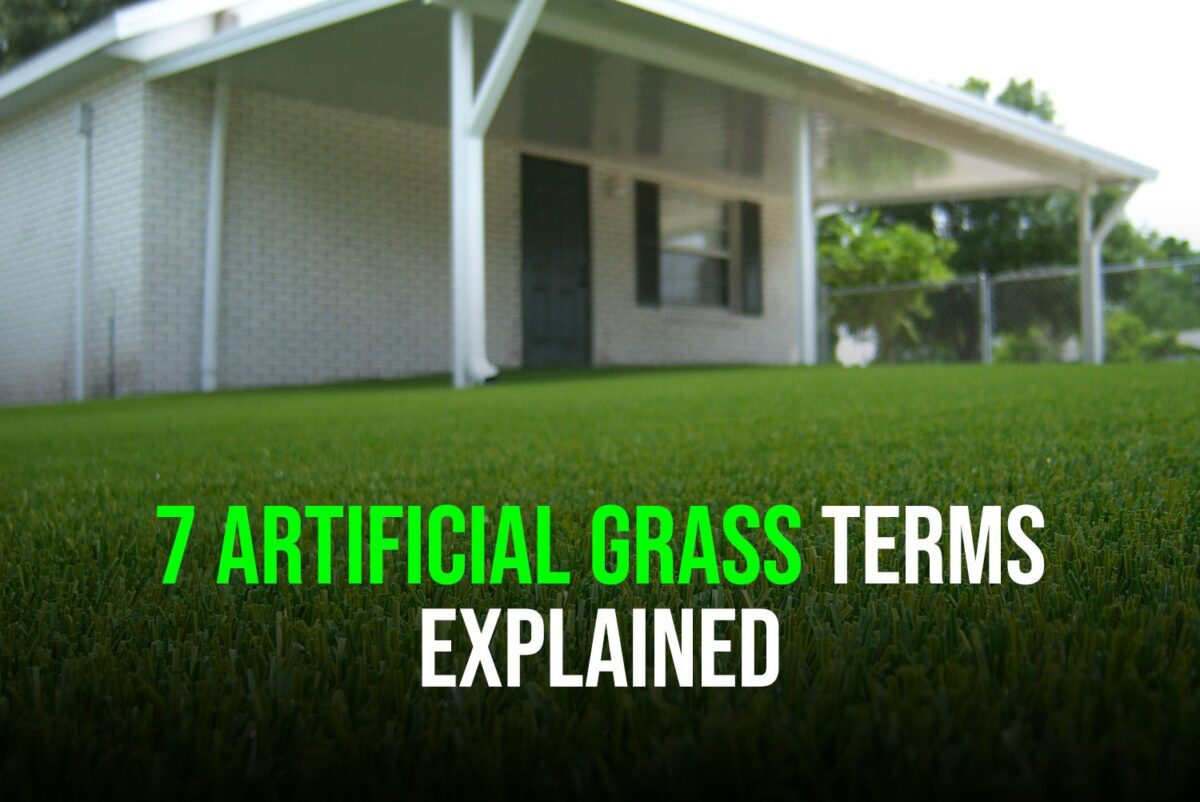- BACKYARD
- COMMERCIAL
- ENVIRONMENT
- FIELD TURF NEWS
- GOLF
- MAINTENANCE
- NEWS
- PETS
- POOL
- RESIDENTIAL
- TURF TIPS
Artificial Grass Buyer’s Guide: Understanding the Technical Jargon

Artificial grass has become incredibly popular as a low-maintenance, year-round green solution for lawns, landscaping, and even sports fields. But when shopping for artificial turf yard products, you’ll likely encounter technical terms that sound more like a foreign language than a backyard upgrade.
We love sharing what we know here at FieldTurf Landscape, so today, we’re explaining some of the most common turf terms you’ll encounter during this process.
Why the Jargon Matters
Understanding these terms allows you to:
- • Compare Products: Technical specifications help you compare different artificial turf options side by side.
- • Match Turf to Your Needs: Do you need a durable surface for a pet area, artificial grass for backyard use, or a realistic putting green? The jargon tells you what to look for.
- • Assess Quality and Value: Understanding factors like face weight and denier allows you to evaluate if you’re getting a good price for the quality of the turf.
7 Artificial Grass Terms You Should Know
- Pile Height: This refers to the length of the individual grass blades, measured in millimeters (mm). Pile height significantly impacts the look and feel of artificial turf for backyard use, front lawns, and other types of landscapes.
- • Shorter piles (25-35mm) offer a manicured, freshly-mowed appearance.
- • Longer piles (35mm+) create a lush, natural-grass look.
- Face Weight: Measured in ounces per square yard, this tells you the density of the yarn used in the turf. Higher face weight generally means a denser, more durable, and more luxurious-feeling product.
- Thatch: Many artificial grass products have a layer of brown or tan curly fibers at the base, mimicking natural grass thatch. Thatch helps the blades stand upright and adds to a realistic look.
- Backing: This is the foundation of the artificial turf. Look for these keywords:
- • Polyurethane backed: Strong and durable, making it a good choice for high-traffic areas.
- • Permeable backing: Features drainage holes to allow water to flow through, crucial for outdoor installations.
- Infill: Small granules of sand, rubber, or other materials are often brushed into the turf after installation. Infill helps:
- • Keep the blades upright for a natural appearance
- • Weigh down the turf
- • Provide cushioning and stability
- Denier: Denier measures the thickness of individual yarn fibers. Higher denier typically translates to more durable yarn.
- Gauge: Refers to the spacing between rows of stitches in the artificial turf backing. A smaller gauge means stitches are closer together, resulting in a denser turf.
Don’t Get Lost in Translation
At FieldTurf Landscape, we understand that choosing artificial grass can feel overwhelming. That’s why our experts are here to simplify the process and guide you toward the best solution for your specific needs. We offer a wide range of premium artificial grass products and unmatched knowledge to make your project successful.
Call 866-352-4575 or message us today for a personalized consultation. If you’re outside our direct service area, we’ll gladly connect you with a trusted FieldTurf Landscape dealer or installer near you. Looking forward to our chat!


